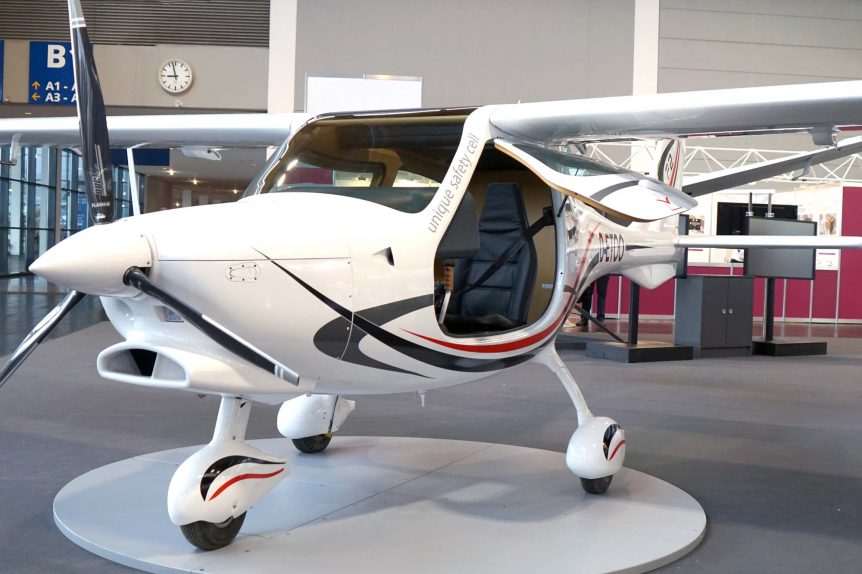Electric Flight.eu reports on the new Flight Design F2e, a two-seater and first of an expanding range of aircraft that might even include hydrogen-powered craft. The smaller Flight Design CT has been flying for over 18 years, and over 2,000 have been sold, but typical of the small aircraft industry, Flight Design has been assimilated under a larger entity, Lift Air. Working with Siemens for the new craft’s motor and APUS* for assistance with design and certification, Flight Design has created a light sport aircraft that provides safety, comfort and good performance on either gasoline or electric power. While the gasoline-powered version will probably be held to LSA weights, the electric model will have a reported maximum weight of 1,100 kilograms (2,420 pounds). This comes from a probably substantial airframe that can be modified to carry four passengers, or batteries that will allow a promised two-to-three-hour endurance. (Even though this was reported in two sources, your editor has qualms about …
Getting Wired on the e-Spyder
Stephan Boutenko of Alternair passed this along, and it is worth a read. Jason Paur of Wired Magazine’s Autopia web site reports on flying Tom Peghiny’s e-Spyder, a combination of Tom’s Flightstar ultralight with a Yuneec motor, controller and battery. Paur’s impressions are highly positive, with the desire to continue the experience. He notes, “Flying on battery power is about the unique experience of flying without the noise, vibration and smells of a traditional engine pulling you along. It’s an entirely different sensation. And like gliding, it is about the challenge of flying within the limitations of the aircraft and maximizing your time aloft. “’It’s like hypermiling a flight,’ Peghiny says.” Hypermiling in automobiles is the act of conserving fuel by tactics such as accelerating gently to a speed somewhat above the average desired, then coasting to a point below that average and accelerating again. Electric aircraft may require such tactics for at least the immediate future until battery technology …
Yuneec Adds to Airplane, Motor Lineup
Shanghai-based Yuneec, already promoting a line of electric paramotors, an electric trike, the two-seat E430, unveiled at last year’s AirVenture, and a series of motor/controller/battery combinations, has added to their offerings at AirVenture 2010. New craft include two aircraft, the Apis 2 and Viva from Martin Wezel Flugzeugtechnik, a German designer and purveyor of sailplanes and light sport aircraft. The Apis 2 is a derivation of the Silent electric sailplane, and in this application will be powered by a Yuneec motor system. The Viva, a two-seat motorglider, was designed originally for an HKS-700E two-cylinder engine of about 60 horsepower, and will be converted, like the Apis, to Yuneec power. Spanning 15 meters (49.2 feet), the Apis 2 has a best lift-to-drag ratio of 39:1 at 95 kilometers per hour (59 miles per hour). Normally fitted with a Hirth F33 two-stroke engine of 27 horsepower, the sailplane is self launching and carries 14 liters of fuel, enough for about an hour-and-a-half of …

